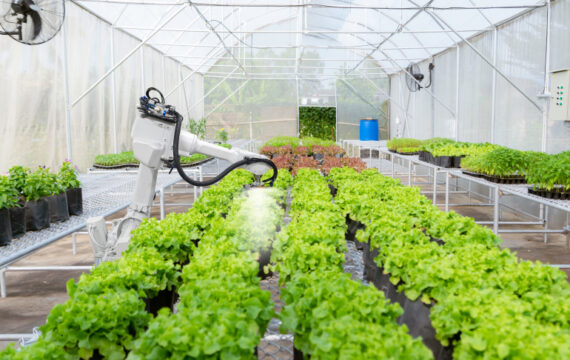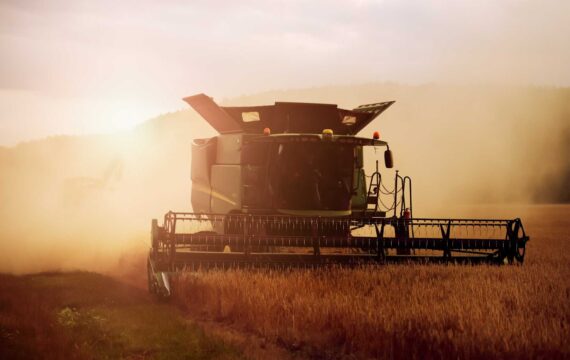Livestock farming is evolving rapidly. With ongoing population growth, the demand for protein is increasing. The main concerns, however, are the consequences of supplying this demand.
The livestock sector currently emits 7.1 gigatons (GT) of CO2 equivalent per year, which equals 14.5% of all human-caused greenhouse gas (GHG) emissions. And if production intensifies in the future, so will the pollution. That is why sustainability is becoming a priority for livestock farming businesses.
In this article, you’ll learn:
- What sustainable livestock farming is
- The main challenge for the agricultural sector
- Applications of livestock monitoring technologies
- How to effectively manage a herd in livestock production
- Perks of digitalization for livestock management
What is sustainable livestock farming?
What does being sustainable mean when raising livestock? First of all, it means environmentally friendly and efficient food production that minimizes harmful impacts. On top of that, it means improving both food safety and animal welfare.
International standards on animal welfare

Previously vital economic parameters such as yield, feed conversion ratio, and production cost are now complemented by new metrics. Sustainability shifts the focus toward animal health, public health, biodiversity, and CO2 ammonium-phosphate pollution. For next-generation agricultural businesses, keeping them intact is now just as important as seeing the economic growth curve.
The main challenge for the agricultural sector
Modern consumers’ demands for sustainability put pressure on livestock businesses. One of the main challenges for farming today is showing that farming operations don’t harm the environment.
Beyond that, animals’ living conditions and welfare are of consumers’ interest. In fact, consumers appreciate animal welfare over other considerations when it comes to selecting food products. Research shows that consumers consider animal-friendly products to be healthier, tastier, more hygienic, safer, more acceptable, more authentic, and more

Source: Deloitte – Consumer demands for farmers
To win over clients, livestock businesses have to prove their sustainability. This can be achieved by adopting modern practices. Smart technology solutions help the livestock sector become transparent, efficient, and environmentally friendly.
Applications of livestock monitoring technologies
Thanks to monitoring technologies, farmers can keep track of animal welfare. Nutrition, growth, health — all these parameters are tracked with the help of IoT sensors. What’s more, artificial intelligence and machine learning-powered solutions assist farmers in turning gathered data into valuable insights that help improve existing practices.

Source: Monitoring technologies for livestock keeping
Feeding management
Improved feeding management helps farmers save resources and reduce waste. Technological solutions enable precision feeding. In other words, they allow the provision of the right amount of feed per animal. Farmers get full visibility and control over the feeding schedules. Powered with AI, livestock management software can determine the exact food rations for animals, optimizing the feed mix.
Breeding management
Within the livestock sector, ruminants are the largest emitters of methane due to their enteric fermentation. To reduce GHG emissions, cattle farming businesses apply genetic selection and breeding. According to researchers, about 20% of a ruminant’s methane emissions rate stems from genetics alone. This means that intentional breeding can reduce environmental impact.
GHG intensity of various foods

Source: McKinsey & Company: Agriculture and climate change
Here’s how it works. Automatic feeding and IoT technology can help farmers research the amount of feed eaten. Combined with information on genomes of ruminants, this data allows farmers to select the best animals for breeding. In the end, thanks to GHG-focused genetic breeding, a cattle farming business can get a herd with low methane production.
Behavior monitoring and management
Technological solutions help farmers monitor the behavior of every single animal they keep. For instance, IoT devices attached to a pig’s ears can transmit data about the pig’s habits and well-being. By tracking an individual animal’s behavioral tendencies, owners can store and even share this information with veterinarians, animal feed producers, and meat processors. If the behavior is abnormal, they can spot it early on.
Effective herd management in cattle farming
The simple truth is that herd management becomes much easier with tech solutions. Advanced technologies such as IoT, drones, robotics, and location-based services help farmers conduct sustainable cattle farming.
Herd health tracking
IoT devices for animals allow farmers to keep a record of the herd’s health. Unusual behavior or slow movements may indicate the spread of illness. By anticipating a possible outbreak, farmers can respond fast and isolate sick animals. Moreover, thanks to livestock management software, farmers can track cattle vaccinations and other important events.
Location-based services for grazing
In livestock farming, GPS tracking of herd movements helps farmers control the location of animals in pastures. GPS technology allows herds to safely graze across large distances without getting lost. It also tracks the amount of movement per animal.
Drone-based pasture surveys
Instead of visually checking every animal in a pasture, nowadays, farmers use drones. This technology is perfect for large-scale inspections. Moreover, drones help farmers control pasture land and nurture biodiversity. Drones collect data on land and grass quality, which helps farmers choose suitable spots for fenceless grazing.
Robotic farming
Robots are commonly used in livestock production. They milk, shear, feed and perform many other tasks that farmers used to do manually. Robots in agriculture livestock farming reduce operating costs and failures. On top of that, they free humans for more complicated tasks.
Digitalization for livestock management
Today, effective livestock management is all about digitalization and automation. The reduction of manual labor in livestock keeping and meat processing leads to cost savings. In contrast to humans, an automated system makes fewer errors; it also optimizes and speeds up processes. On top of that, a farming system stores all necessary information in a cloud, which allows for easy data sharing between stakeholders.
Conclusion
Sadly, agriculture is to blame for a quarter of global GHG emissions. And livestock production is the largest emitter within the industry. Direct emissions from cattle and dairy cows alone are greater than emissions from any single country other than China.
Modern livestock businesses understand the weight of responsibility and are investing in technology and innovations to become more sustainable. Animal farming companies nurture digitalization in livestock management, since it reduces their environmental impact. Supporting sustainability gains consumers’ trust. So it’s a real win-win strategy — the kind we all need to make our future bright.
Contact us to discover how innovative technologies can boost your agricultural company’s sustainability. And if you want to stay updated on the latest AgriTech trends, subscribe to our newsletter.




